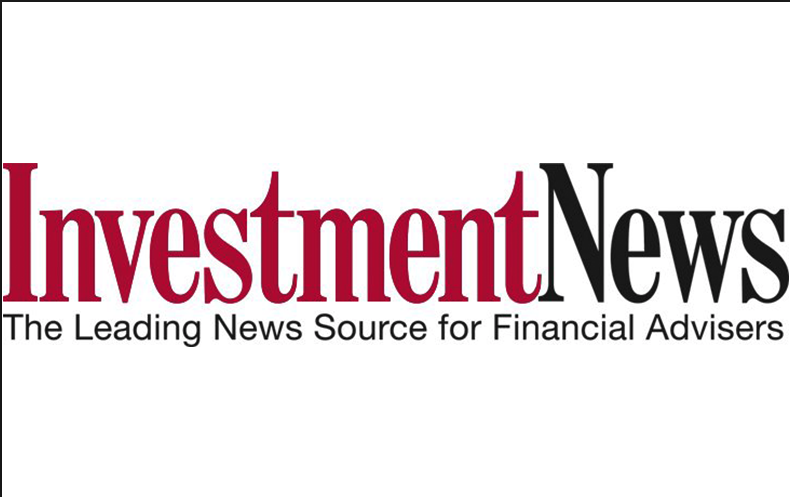Every adviser has a closet of anxieties, stuffed to the gills with brutal bear markets, roaring interest rates and blithering bitcoins. But one of the biggest monsters is probably insidious inflation, which gnaws at investment returns and devalues savings overnight.
With unemployment at 4.1%, inflation fears are rising. Typically,
inflation starts to growl when the labor market is tight and workers can demand higher wages. Eventually, the Federal Reserve starts to increase interest rates to slow the economy and push inflation back into its lair — but in doing so, the Fed raises the risk of recession and pushing down already lofty stock markets.
The
Consumer Price Index rose at a 2.2% annual rate in November, the most recent data available. (A new CPI print hits the headlines Friday.) While this is slightly above the Fed's target rate of 2%, there's less to the November CPI report than meets the eye, said David Kelly, chief global strategist for JP Morgan Funds. Much of the price index's gain was powered by a 9.4% increase in energy prices. Take out food and energy, and the CPI's up 1.7%.
And even that rise was pushed up by a 3.1% increase in the government's proxy for shelter, called owners' equivalent rent.
"Removing this and prices in the other, almost 70% of the Consumer Price Index rose just 1.1% year-over-year," he wrote in a note to clients.
And prices for apparel, new vehicles, used cars, airfares, wireless telephone services and medical services fell in the 12 months ended November.
In short, there's more than a whiff of deflation in the air. In the 50 years before the Great Recession, the core CPI — without food and energy — averaged 4%, and the yield on the 10-year Treasury note averaged 6.8%. What's keeping inflation so low?
"It's the great puzzle of our times," Mr. Kelly said in an interview. "And it's not just us. Japan has a 2.8% unemployment rate and they can't get inflation going, either."
Among the deflationary forces at work are large secular trends, starting with the decline of unions, which traditionally fought with corporations for higher wages.
"Forty years ago, the fight was between a union and an employer, and it was more or less a fair fight," Mr. Kelly said. "Unions have largely gone away in the private sector, and one employee fighting against a company is not an equal fight."
Another is technology. In the old days, the watchword was "caveat emptor" — let the buyer beware — because sellers typically had more information than buyers do. Mr. Kelly argues that the current watchword should be "caveat vendor" — let the seller beware. The buyer can search prices easily and effortlessly: If you're looking for airline fares, for example, all you have to do is rank prices from lowest to highest on a site like Expedia.
"I can't think of a human activity that requires less effort than clicking a mouse," Mr. Kelly said.
Economists surveyed by the Wall Street Journal project a 2.3% CPI annual gain by June 2018, although they also project a 2.1% rate by year-end. One reason for the projected increase could be the effects of the tax cut for corporations and, to a lesser extent, individuals, signed into law in December.
"It's going to be an interesting year for economists," Mr. Kelly said. "We have never tried massive fiscal stimulus in a period of full employment."
Michelle Meyer, head of U.S. economics at Bank of America Merrill Lynch, thinks inflation could well stage a modest comeback this year: She's expecting a 1.8% core CPI by year-end.
"We think that 2018 is reversing the 2017 trend of disinflation, and that it will persist into 2019. We have to think that we are near the boundary of the nonaccelerating inflation rate of employment."
And, she said, some areas that have seen pricing declines could see increases this year — among them wireless telephone rates.
"That could add 0.2 percentage points to core inflation year over year," Ms. Meyer said.
The
bond market seems to be expecting higher inflation as well: The break-even rate for 10-year Treasury Inflation-Protected Securities is 2.01% now, compared with 1.18% in February 2016. And the yield on the two-year Treasury note has soared to 1.96% from 1.26% at the beginning of the year.
Are there any good early warning signs of inflation?
In the past, economists have tried tracking a few measures, including:
•
Average hourly wages. A sharp upturn typically presages higher inflation. As of December, average hourly wages were $26.63, up 2.5% from a year earlier.
•
Factory capacity utilization. At least in theory, as factories run at full tilt, demand outstrips supply and prices rise. Capacity utilization stands at 77%, up considerably from the depths of the recession, but well below the 82% generally consider as the brink of inflationary pressure.
•
Gold and raw materials prices. Gold is typically more correlated with the value of the U.S. dollar than inflation, but it's widely viewed as the canary in the inflationary coal mine. Gold prices are up about 11.3% the past 12 months.
In the end, however, it all comes down to core inflation, a measure that's among the Holy Grails of economic predictions.
"The core CPI is the single most important measure, but it's murderously hard to predict," Mr. Kelly said.







